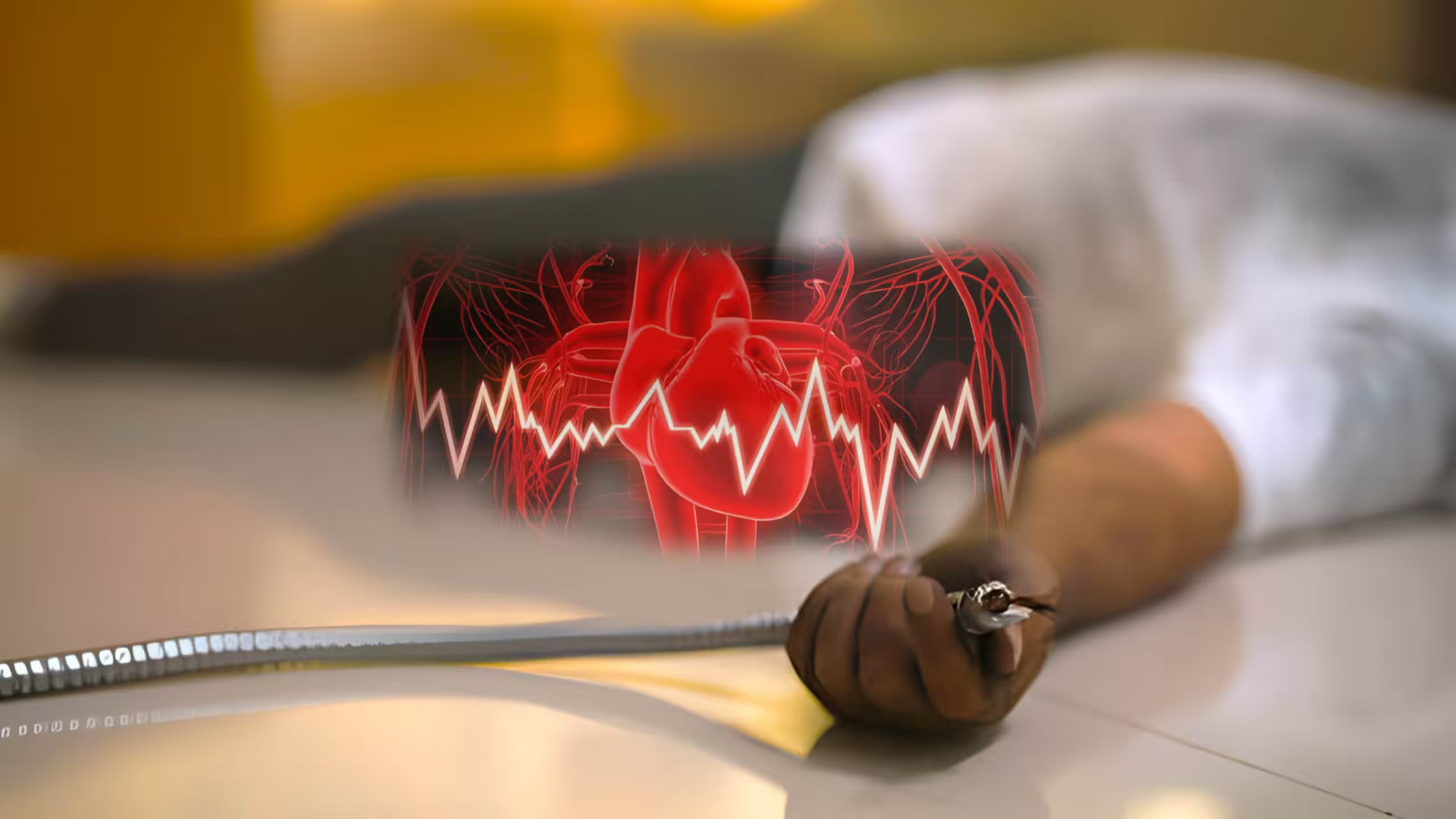Ventricular fibrillation is a life-threatening condition where the heart’s electrical activity becomes disorientated, leading to inefficient blood pumping. This can lead to sudden cardiac death. Its occurrence can be triggered by electrical shocks from both alternating current (AC) and direct current (DC), which we’ll explore, and analyze the technical aspects that influence fatality or survival.
What is Ventricular Fibrillation
Ventricular fibrillation or VF occurs when the heart’s ventricles contract erratically and rapidly, rather than in a coordinated manner. The heart’s rhythm is controlled by electrical signals, these signals become chaotic, disrupting the normal pumping action. As a result, the heart cannot effectively circulate blood, depriving vital organs like the brain and heart of oxygen. Without immediate intervention, VF can lead to death within minutes.
What causes ventricular fibrillation ? The effects can range from a pre-existing heart disease to external factors, such as electrical shocks. When a person gets an electrical shock, the current may interfere with the heart’s natural electrical system, causing it to lose its rhythm and fall into a rapid VF.

AC vs DC Shocks: The Technical Differences
Electrical shocks can occur from exposure to both AC and DC currents, but their impact on our hearts differ. Understanding these differences is crucial in assessing the risk of Cardiac failure by Ventricular fibrillation.
Alternating Current (AC): AC is the type of electrical current used in household wiring and most electrical systems worldwide. It changes direction 50 to 60 times per second (50/60 Hz). When a persons bare body is exposed to AC, the current can interfere with the electrical impulses in the heart. Because of its rapid oscillations, AC tends to “lock” the heart into fibrillation more easily than DC.
The imminent danger with AC is its ability to cause sustained muscle contractions. Momentarily the mind and body is prone to extreme seizure, and in maximum cases there’s a reflex action to instantaneously remove the exposed body part. This can prevent a person from letting go of the electrical source. If this isn’t the case and if the AC electricity passes through the chest area, especially at higher voltages (above 50 volts), it can cause the heart’s electrical signals to become erratic, resulting in VF and instant death.
Direct Current (DC): DC, unlike AC, flows in a single direction. It is found in batteries, solar panels, and AC-to-DC converting power supplies. DC is less likely to induce ventricular fibrillation compared to AC. This is because DC typically causes a single, strong muscle contraction rather than the sustained muscle stimulation seen with AC. After the initial shock, the heart’s electrical system might return to normal if the electric source or the body is removed quickly.
However, high-voltage DC can still be fatal. In some cases, a DC shock can stop the heart outright, leading to cardiac arrest, but it is less likely to cause the chaotic electrical activity seen in VF.

RF Current (RFC):
Radio frequency (RF) currents (which are also AC alternating in nature), typically used in wireless communication systems and medical devices, can cause unique types of injuries when they come into contact with human tissue. Unlike lower-frequency AC or DC currents, RF currents operate at much higher frequencies (typically 100 kHz and above), which leads to a different biological effect.
Instead of deep tissue penetration, RF currents tend to stay near the surface of the skin, causing localized heating and burns. These burns can be severe, as RF energy is efficiently converted to heat, damaging the skin and underlying tissues. While RF shocks are less likely to cause ventricular fibrillation compared to AC and DC shocks, the risk of burns, thermal injuries, and tissue damage remains a high concern.
Individuals are often exposed to household AC terminal shocks more as compared to electric professional or industrial workers. Personnel particularly in industrial and medical environments, where high-power RF equipment is used, or the Amateur Radio Operators are susceptible to RF shocks and burns. Proper shielding, insulating-safety measures, and protection from grounding are essential to prevent all types of electric current accidents.
Worldwide, 100’s of thousand people are dead of electrocution due to heart failure. In USA, there are approximately 500 deaths per year, as a result of electrical injuries. Many of these deaths occur in children due to carelessness and non-safety.

Why Some People Survive Electrical Shocks
Not everyone who experiences an electrical shock goes into ventricular fibrillation or suffers fatal consequences. Several factors determine the outcome, including:
- Pathway of Current: The route the electrical current takes through the body plays a critical role. If the current travels across the chest, especially near the heart, the risk of VF increases. However, if the current passes through other parts of the body, such as the arms or legs, the heart may be less affected.
- Voltage and Duration of Exposure: Higher voltages and prolonged exposure increase the likelihood of VF. AC currents above 50 volts pose significant risks, especially if exposure lasts for several seconds. DC currents, while generally safer, become dangerous at higher voltages (e.g., above 500 volts).
- Individual Susceptibility: Some people may have pre-existing conditions, such as heart disease or electrolyte imbalances, that make them more susceptible to VF. Age and overall health can also influence survival chances.
- Prompt Medical Intervention: The speed at which medical help is provided significantly impacts survival. Cardiopulmonary resuscitation (CPR) and defibrillation can restore normal heart rhythms in VF cases, especially if delivered within minutes. Defibrillators work by delivering a controlled electric shock that resets the heart’s electrical activity.

- Body Resistance: The internal body resistance can determine how much current passes through vital organs, including the heart. People with higher internal resistance are less likely to experience severe effects like ventricular fibrillation, as less current reaches the heart. Moisture, (wet or dry skin), and the presence of wounds can also drastically lower skin resistance, making the body more susceptible to electric shock.
- Body Mass: Individuals with larger body mass can disperse the current over a wider area. In contrast, petite or leaner body mass may allow the current to focus more on specific pathways, jeopardizing the heart and vital organs. Essentially, a larger bodied mass person might act as a buffer, to spreading external currents direct interference with the heart’s own electrical system, thereby lowering fatality.
Ventricular fibrillation is a dangerous condition often triggered by external electrical shocks. AC, with its oscillating nature, poses a higher risk of inducing VF. Understanding these technical details can help in mitigating risks and ensuring prompt treatment. Hence, electrical hazardous educational safety information is must for all.






